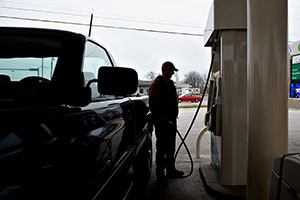Gasoline Falls to 4-Year Low Amid Crude Slide: Lundberg

The average price of regular gasoline at U.S. pumps slid to the lowest level since Sept. 24, 2010, dropping 12.35 cents in the two weeks ended Dec. 5 to $2.72 a gallon, according to a survey by Lundberg Survey Inc.
Prices are also 56.09 cents lower than a year ago, according to the survey, which is based on information obtained at about 2,500 filling stations by the Camarillo, California-based company. The price discount is substantial and will contribute to a healthier level of U.S. gasoline demand, according to Trilby Lundberg, the president of Lundberg Survey.
Retail gasoline fell after crude oil had the biggest one-day decline in more than three years on Nov. 28, a day after the Organization of Petroleum Exporting Countries decided not to reduce crude oil production in the face of falling prices caused by booming output in North America.
“The continued crude oil price decline is again the cause of the decline at the pump,” Lundberg said in a telephone interview. “From here, without an oil bounce up, there still may be a few more cents decline at the pump.”
The highest price for gasoline in the lower 48 states among the markets surveyed was in San Francisco, at $3.04 a gallon, Lundberg said. The lowest price was in Albuquerque, New Mexico, where customers paid an average $2.38 a gallon. Regular gasoline averaged $3.02 a gallon on Long Island, New York, and $2.98 in Los Angeles.
Crude Slides 14%
West Texas Intermediate crude, the U.S. benchmark priced in Cushing, Oklahoma, declined $10.67, or 14%, to $65.84 a barrel on the New York Mercantile Exchange in the two weeks to Dec. 5. It fell $7.54 on Nov. 28, the largest one-day drop since May 5, 2011.
Prices have fallen 39% since peaking this year on June 20. OPEC members, who produce about a third of the world’s oil, took no action on output limits at a Nov. 27 meeting in Vienna.
U.S. oil output rose to 9.08 million barrels a day the week ended Nov. 28, the highest level in weekly Energy Information Administration data dating back to 1983. U.S. production has increased 64% in five years as companies have used horizontal drilling and hydraulic fracturing to tap into hydrocarbon-rich layers of underground shale rock.
Refineries processed 16.4 million barrels of oil a day in the week ended Nov. 28, a seasonal record in Energy Information Administration records dating back to 1989.
Gasoline stockpiles grew 2.14 million barrels, or 1%, in the seven days ended Nov. 28 to 208.6 million, EIA data show. Demand over the four weeks ended Nov. 28 reached 9.22 million barrels a day, the highest level for the end of November since 2007.

